
The role of data in the war against COVID-19
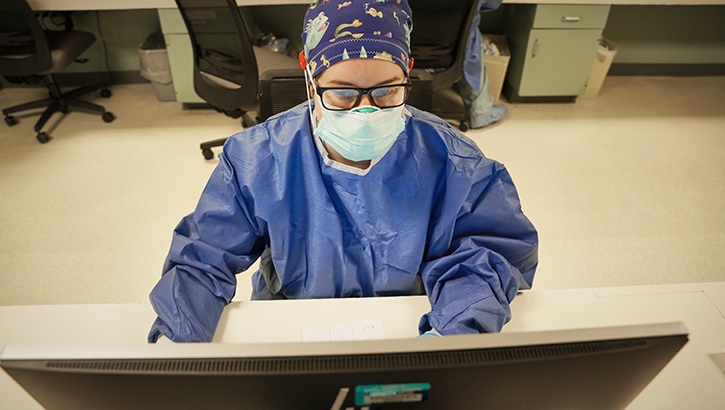
The Joint Trauma System launched the COVID-19 registry in a matter of months to consolidate data collection across all military hospitals and clinics around the world. (U.S. Marine Corps photo by Cpl. Daniel R. Betancourt Jr.)
In the war on COVID-19, the Department of Defense will rely on the future development of vaccines and treatments as weapons in its arsenal. Data sets that inform decisions and improve care serve as a key component toward this effort. The staff of the Joint Trauma System at Joint Base San Antonio-Fort Sam Houston, Texas, lead that effort.
“Without data, you’re just another person with an opinion,” said Mary Ann Spott, deputy chief of the JTS. Spott helped create DoD’s Trauma Registry in 2006 and the recently launched COVID-19 registry, which will track patient information and treatment outcomes to help inform best practices.
“A registry provides high-quality data that’s collected in a standardized and consistent format,” she explained. “It allows you to make decisions that impact care positively. So you can look at what everyone is doing and pick best of breed and promulgate it through the entire system.” Insights from the trauma registry prompted changes across the DoD in resuscitation and blood transfusions of trauma cases, said Air Force Col. (Dr.) Stacy Shackelford, chief of the JTS. By analyzing data in the trauma registry, researchers found that a blood transfusion received within the first 30 minutes of injury led to increased survival. “This evolved to all special operations medics being trained in blood transfusions and providing blood to carry in aid bags,” she said.
In the same way, the COVID-19 registry could provide critical understanding to make performance improvement guidelines. Working with infectious disease experts from Uniformed Services University of Health Sciences in Bethesda, Maryland, the JTS deployed the COVID-19 registry in a matter of months to consolidate data collection across all military hospitals and clinics around the world.
The registry will capture approximately 195 unique data points, including demographics, symptoms, past medical history, lab and radiology tests, contact with known infected patients, treatments, outcomes, and complications. By identifying data points of patients and linking data to specific treatments and outcomes, researchers can draw conclusions and recommendations. Shackelford admits she finds such analysis challenging and complicated. Data must take into account risk factors, which places a burden of responsibility to ensure accurate and meaningful conclusions. Otherwise, she said, you may end up with inaccurate information.
“This registry, which already includes data from 6,510 patients, will support COVID-19 clinical performance improvement and track the epidemiology of the disease,” said Thomas McCaffery, the Assistant Secretary of Defense for Health Affairs, in a recent announcement. “The data will help research and medical teams, both in the DoD and the civilian sector, provide more accurate insight into future advancements in vaccines and treatments.”
While the registry will collect information on potential drug treatments for COVID-19, the first priority will be to study the use of COVID-19 convalescent plasma or CCP in patients, said Shackelford. “The registry also will track the outcomes of patients who receive CCP compared to those who do not – all of which will greatly enhance efforts toward therapeutic treatment development,” McCaffery added. The ability to track patients through the continuum of care represents a unique component of DoD registries. The COVID-19 registry will track patients from the first visit to the achievement of a negative COVID test to the 30-day period after leaving the hospital. As the clinical understanding of COVID-19 continues to evolve, the registry will adapt to include new treatments as outlined by the Centers for Disease Control and Prevention and the Society of Critical Care Medicine, Shackelford added.
Location information in the registry could help identify potential hot spots and lead to the deployment of military medical units and equipment in response to an outbreak, according to Spott. The system will also flag recovered patients who live within 40 miles of a blood collection center to identify potential CCP donors. For those patients who live more than 60 miles away from a blood center, mobile blood units could move out to secure donations, added Shackelford. The registry may also help identify asymptomatic cases. “One of the important things we are implementing right now is to be able to tie symptom survey results to lab testing,” she added.
In the long term, Spott believes the COVID-19 registry may help with future viral outbreaks. “We have a good infrastructure now; we’ve put a lot of thought and effort into this and we could apply it to other pandemics and also other epidemics,” she said.
Shackelford labeled as key having the full capability of data analysis, performance improvement, and clinical practice guidelines to support decision making by leadership at the highest level on down to unit levels.
“The value of the registry is not just data alone. Just collecting data is essentially not going to change anything, but really linking it to performance improvement guidelines,” she said. “One of our overarching goals at JTS is to establish the framework of a trauma system in every combatant command so we can immediately establish performance improvement in times of war …and this pandemic is a war.”
Summer PCS plans altered by COVID-19
Article
6/29/2020
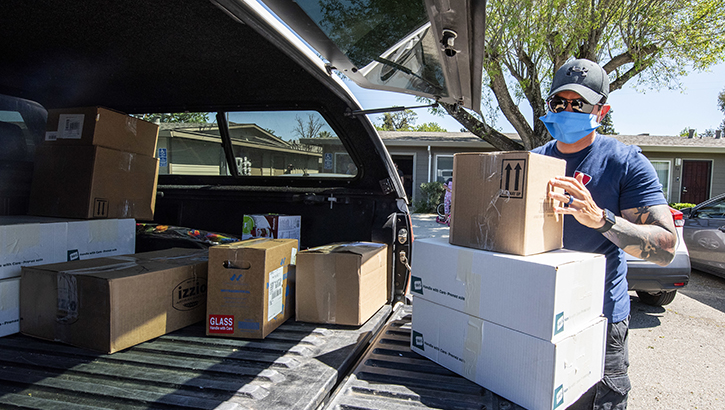
Service members and families have suggestions to keep you safe.
How the military stays ready during disease outbreaks
Article
6/29/2020
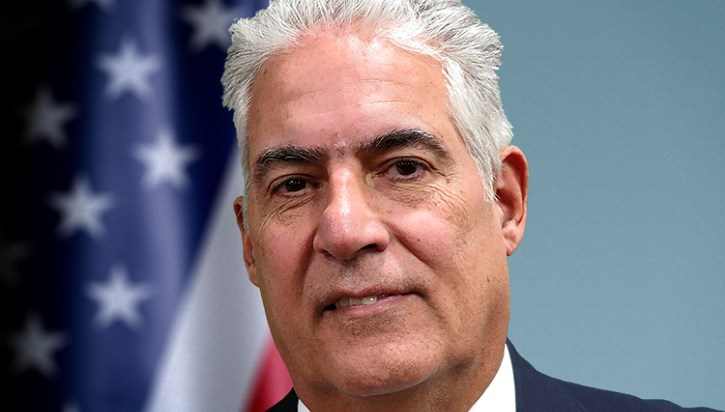
A Q&A with a health surveillance professional at Armed Forces Health Surveillance Branch
BACH Civilian earns RHC-A Civilian of the Year
Article
6/26/2020

[Guidry] will advance to the U.S. Army’s Medical Command (MEDCOM) Civilian of the Year competition later this year.
DoD trains staff to collect convalescent plasma donations
Article
6/26/2020
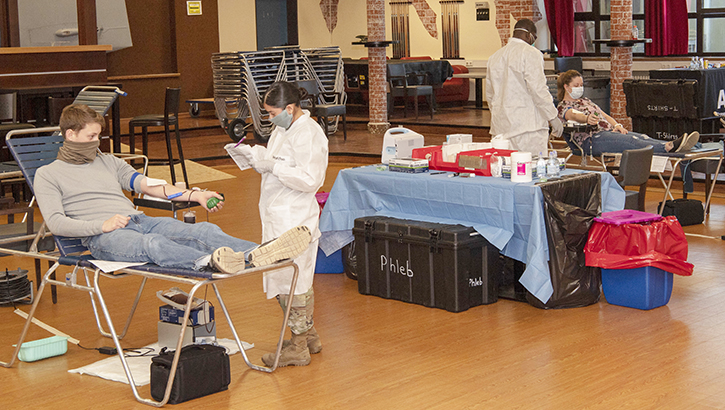
Learn about training features, locations, timetable
MHS Minute: DoD Focused on COVID-19 Testing and Treatment
Video
6/25/2020
Have you recovered from COVID-19, or tested positive for antibodies? Consider donating convalescent plasma. To learn how, go to https://www.militaryblood.dod.mil/
Army 2nd Lt. first to donate convalescent plasma at Benning
Article
6/24/2020

Convalescent plasma contains antibodies to fight the disease.
Download Letter to Beneficiaries
Publication
6/24/2020
This message replaces guidance issued on March 31. It explains actions military pharmacies are taking to keep services and visits safe during the COVID-19 pandemic, and it outlines your pharmacy options as a TRICARE beneficiary.
Pharmacy Operations Division (POD) Reverse HPCON Status Guidance
Publication
6/24/2020
Guidance for Outpatient MTF Pharmacies in Response to COVID-19
Tackling mosquitos to protect the force
Article
6/23/2020

Mosquitoes transmit a host of woes but not COVID-19
DHA’s new MEDLOG IT PMO supports MHS logistics
Article
6/23/2020
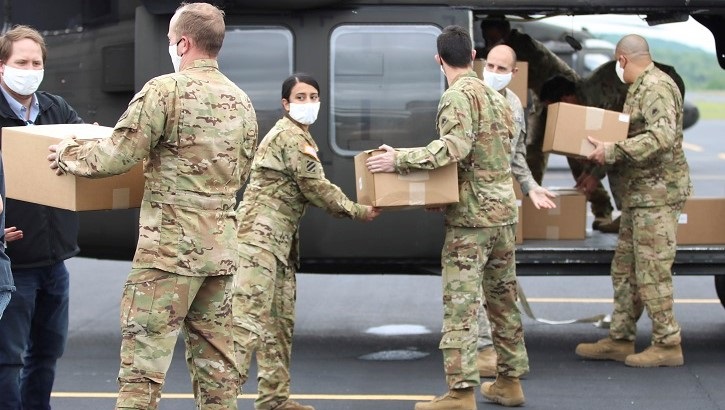
During the COVID-19 pandemic, the MEDLOG IT PMO provided essential medical logistics IT and supply chain support across the MHS and Department of Defense.
Understanding the potential of COVID-19 convalescent plasma
Article
6/19/2020
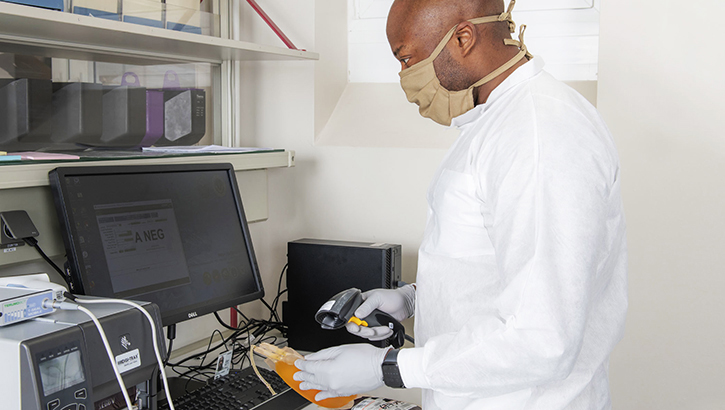
Researchers are harnessing the power of antibodies in COVID-19 convalescent plasma.
DoD COVID-19 Practice Management Guide Version 4
Technical Document
6/18/2020
This Practice Management Guide does not supersede DoD Policy. It is based upon the best information available at the time of publication. It is designed to provide information and assist decision making. It is not intended to define a standard of care and should not be construed as one. Neither should it be interpreted as prescribing an exclusive course of management. It was developed by experts in this field. Variations in practice will inevitably and appropriately occur when clinicians take into account the needs of individual patients, available resources, and limitations unique to an institution or type of practice. Every healthcare professional making use of this guideline is responsible for evaluating the appropriateness of applying it in the setting of any particular clinical situation. The Practice Management Guide is not intended to represent TRICARE policy. Further, inclusion of recommendations for specific testing and/or therapeutic interventions within this guide does not guarantee coverage of civilian sector care. Additional information on current TRICARE benefits may be found at www.tricare.mil or by contacting your regional TRICARE Managed Care Support Contractor.
Public Health Emergency Officers balance risk and mission during crisis
Article
6/17/2020
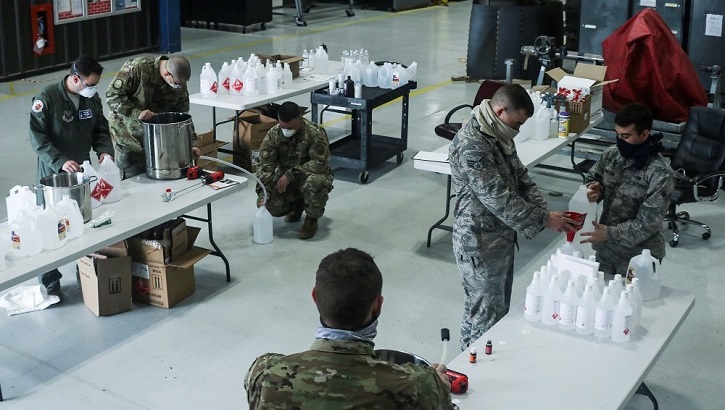
PHEOs are military treatment facility staff who are designated to serve as a resource to help guide installation commanders during a large scale public health incident.
Teleteaching during the pandemic? USU center seeks educators' stories
Article
6/16/2020

Educators faced juggling act on front lines, home front
DOD's Health Care Chief Discusses Pivot to Counter COVID-19
Article
6/16/2020
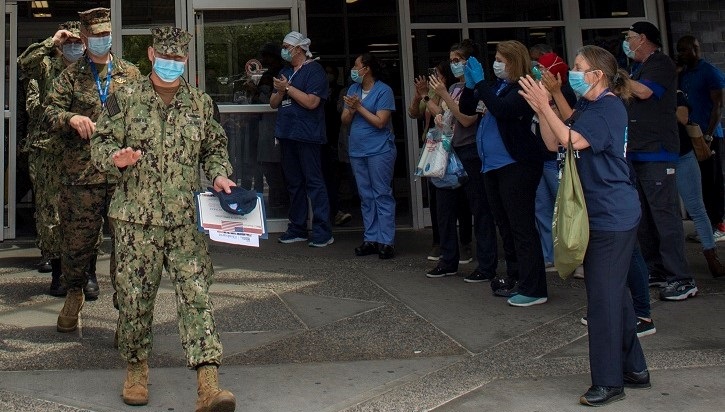
"[O]ur uniform leaders and our civilians are very, very good at adapting to change..."





















.jpg)









No hay comentarios:
Publicar un comentario